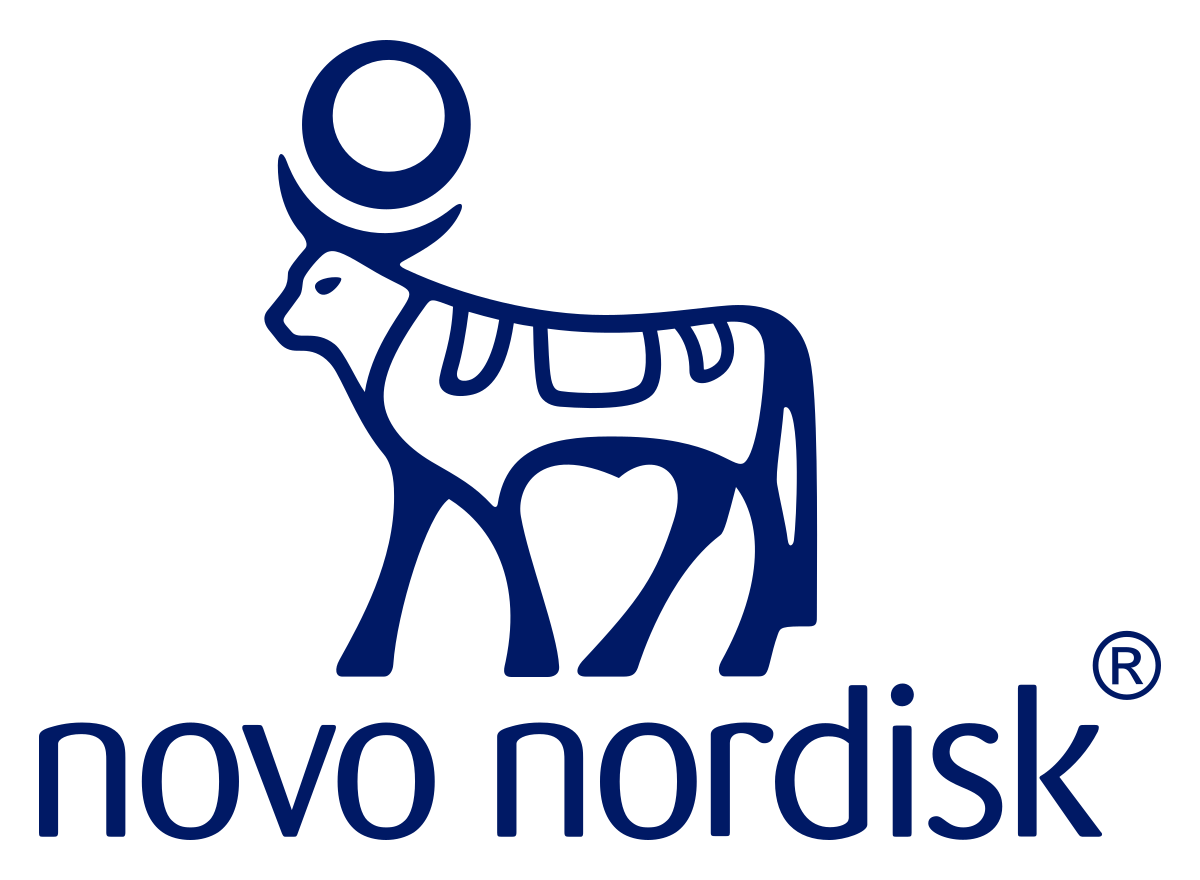预约演示
更新于:2025-10-30
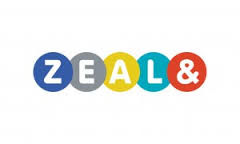
Zealand Pharma A/S
更新于:2025-10-30
概览
标签
内分泌与代谢疾病
其他疾病
消化系统疾病
合成多肽
化学药
疾病领域得分
一眼洞穿机构专注的疾病领域
暂无数据
技术平台
公司药物应用最多的技术
暂无数据
靶点
公司最常开发的靶点
暂无数据
| 排名前五的药物类型 | 数量 |
|---|---|
| 合成多肽 | 10 |
| 化学药 | 1 |
关联
11
项与 Zealand Pharma A/S 相关的药物靶点 |
作用机制 GCGR激动剂 |
在研机构 |
非在研适应症- |
最高研发阶段批准上市 |
首次获批国家/地区 美国 |
首次获批日期2021-03-22 |
靶点 |
作用机制 GLP-2R激动剂 |
在研适应症 |
最高研发阶段申请上市 |
首次获批国家/地区- |
首次获批日期- |
靶点 |
作用机制 AMYR 调节剂 |
非在研适应症- |
最高研发阶段临床2期 |
首次获批国家/地区- |
首次获批日期- |
50
项与 Zealand Pharma A/S 相关的临床试验NCT07197944
A Phase 3, Double-blind, Randomized, Parallel Group, Placebo-controlled, Multicenter Trial to Confirm the Efficacy and Safety of Glepaglutide 10 mg Twice Weekly, Followed by a Long-term, Open-label Safety Evaluation in Patients With Short Bowel Syndrome-intestinal Failure (SBS-IF)
The purpose of the present Phase 3 trial is to confirm the efficacy and safety of glepaglutide 10 mg twice weekly in a patient population with SBS-IF and generate additional long-term safety data.
Glepaglutide is the International Nonproprietary Name and United States Adopted Name (USAN) for ZP1848.
Glepaglutide is the International Nonproprietary Name and United States Adopted Name (USAN) for ZP1848.
开始日期2025-10-23 |
申办/合作机构 |
NCT06926842
A Randomized, Double-Blind, Phase 2 Trial of Once-Weekly Petrelintide Compared With Placebo in Participants With Overweight or Obesity and Type 2 Diabetes
The main purpose of this study is to investigate efficacy and safety of three doses of petrelintide versus placebo in participants with overweight or obesity and type 2 diabetes.
开始日期2025-04-22 |
申办/合作机构  Zealand Pharma A/S Zealand Pharma A/S [+1] |
NCT07076030
Pharmacokinetics of Petrelintide Following Administration to Participants With Impaired Renal Function
This clinical research study is testing the study compound petrelintide that is being developed for the weight management in people with obesity or overweight with comorbidities or related diseases.
The aim of this clinical research study is to investigate whether the effects of petrelintide will be different in people with normal kidney function compared to people with impaired kidney function.
The aim of this clinical research study is to investigate whether the effects of petrelintide will be different in people with normal kidney function compared to people with impaired kidney function.
开始日期2025-04-15 |
申办/合作机构  Zealand Pharma A/S Zealand Pharma A/S [+1] |
100 项与 Zealand Pharma A/S 相关的临床结果
登录后查看更多信息
0 项与 Zealand Pharma A/S 相关的专利(医药)
登录后查看更多信息
94
项与 Zealand Pharma A/S 相关的文献(医药)2025-10-01·Clinical Nutrition ESPEN
Outcomes of glepaglutide on intestinal absorption and parenteral support in patients with short bowel syndrome
Article
作者: Nielsen, Thor Schütt Svane ; Soldbro, Lise ; Berner-Hansen, Mark ; Jeppesen, Palle Bekker ; Hvistendahl, Mark Krogh ; Pinar, Ismail
BACKGROUND & AIMS:
Glepaglutide, a long-acting glucagon-like peptide 2 (GLP-2) analog, is under development for the treatment of patients with short bowel syndrome (SBS). GLP-2 enhances intestinal adaptation and absorption. This study assessed glepaglutide in terms of its 24-week efficacy on intestinal wet weight and energy absorption, as well as its impact on reducing parenteral support (PS) and maintaining body composition at week 52 in patients with SBS.
METHODS:
In this single-center, open-label, phase 3b study, 10 patients with SBS - 8 with intestinal failure (SBS-IF) and 2 with intestinal insufficiency - received glepaglutide 10 mg once weekly via subcutaneous injection. Intestinal absorption was assessed by the gold-standard metabolic balance studies. The primary endpoint was absolute change in intestinal wet weight absorption, while secondary endpoints assessed changes in energy, electrolyte, and macronutrient absorption after 24 weeks of treatment. Additional endpoints included changes in PS use, body composition and safety after 52 weeks of treatment.
RESULTS:
At week 24, mean numerical increase in intestinal wet weight absorption was 398 g/day (P = 0.0585) and mean energy absorption 1038 kJ/day (P = 0.0215). Improvements occurred in electrolyte and macronutrient absorption. At week 52, mean PS volume was reduced by 800 mL/day (P = 0.0106) with a reduction in mean PS energy content of 866 kJ/day (P = 0.0103). Body composition and weight remained stable, and glepaglutide demonstrated a manageable safety profile.
CONCLUSION:
Patients with SBS treated with glepaglutide demonstrated increased intestinal wet weight and energy absorption, allowing corresponding reductions in PS requirements in those with SBS-IF. Glepaglutide demonstrated a favorable safety profile, positioning it as a promising treatment for patients with SBS.
CLINICALTRIALS:
gov no: NCT04991311; ClinicalTrialsRegister.eu EudraCT no: 2020-005194-27.
2025-07-15·JOURNAL OF CLINICAL ENDOCRINOLOGY & METABOLISM
Dasiglucagon in Children With Congenital Hyperinsulinism Up to 1 Year of Age: Results From a Randomized Clinical Trial
Article
作者: Thornton, Paul S ; Birch, Sune ; Kendall, David M ; De Leon, Diva D ; Kummer, Sebastian ; Ivkovic, Jelena ; Banerjee, Indraneel ; Bøge, Eva
Abstract:
Context:
Congenital hyperinsulinism (CHI) is a cause of persistent hypoglycemia in childhood with a considerable risk of lifelong neurological sequelae. Available pharmacological therapies are limited. Dasiglucagon is a glucagon analog for the treatment of hypoglycemia.
Objective:
To assess the efficacy and safety of dasiglucagon in children with CHI up to 1 year of age.
Methods:
This study included a randomized, crossover, double-blind, placebo-controlled part 1 and an open-label, single-arm part 2 at 4 centers in Germany, the United Kingdom, and the United States. Participants comprised children with CHI aged 7 days to 12 months who were dependent on IV glucose. In part 1, participants were randomized to dasiglucagon or placebo for 48 hours, then crossed over to the other treatment for 48 hours. In part 2, all participants received dasiglucagon for 21 days. The primary outcome was mean IV glucose infusion rate (GIR) in the last 12 hours of part 1.
Results:
Between June 19, 2020, and February 9, 2022, 12 eligible participants were randomized to dasiglucagon–placebo (n = 7) or placebo–dasiglucagon (n = 5). The IV GIR was significantly reduced with dasiglucagon compared with placebo (least-squares mean 4.3 mg/kg/min [95% confidence interval [CI], 1.04 to 7.60 mg/kg/min] and 9.5 mg/kg/min [95% CI, 6.24 to 12.81 mg/kg/min], respectively; P = .004). The most frequent adverse events in both treatment groups were gastrointestinal, dermatological, and metabolism and nutritional disorders.
Conclusion:
In infants with CHI, dasiglucagon significantly reduced the amount of IV glucose needed to maintain euglycemia compared with placebo. Dasiglucagon represents a promising treatment for the management of CHI.
2025-04-22·JOURNAL OF CLINICAL ENDOCRINOLOGY & METABOLISM
Response to Letter to the Editor From He et al: “Dasiglucagon in Children With Congenital Hyperinsulinism up to 1 Year of Age: Results From a Randomized Clinical Trial”
Communications
作者: Thornton, Paul S ; Birch, Sune ; Kendall, David M ; De Leon, Diva D ; Kummer, Sebastian ; Ivkovic, Jelena ; Banerjee, Indraneel ; Bøge, Eva
514
项与 Zealand Pharma A/S 相关的新闻(医药)2025-10-23
Roche is in discussions with the US administration on drug pricing, but CEO Thomas Schinecker declined to say whether it might strike a deal similar to those recently cut by its peers Pfizer and
AstraZeneca
.
Last month,
Pfizer agreed
to provide some of its drugs to consumers at discounts of up to 85% via a new government website dubbed TrumpRx. And earlier this month, AstraZeneca said it would
offer similar concessions
, with the aim of ensuring Americans pay no more for its drugs than patients in other rich countries.
Schinecker made these comments during Roche’s
third-quarter earnings
call with the media. In the quarter, its drug sales increased by 9% to 35.6 billion Swiss francs ($44.7 billion), but the company believes the future is brighter still. It raised its full-year 2025 outlook and has pushed more drugs than ever before into late-stage trials, five of which it believes could have peak sales in excess of $3 billion.
“This year, we’ve advanced 10 potentially lifesaving medicines into the last and final phase of development. This is an absolute record for us. We’ve never come close to such a number before, and we’re not even at the end of the year,” Schinecker said.
Six of these new Phase 3 starts occurred in the past quarter, and several of these are in the cardiometabolic arena, where Roche has invested heavily in recent years. Two of the assets Roche obtained through its buyout of Carmot are now in late-stage trials: CT-388, for obesity and CT-868 in type 1 diabetes. Both are injected GLP-1/GIP agonists.
CT-388 has posted
highly promising
obesity data in Phase 1, though no
Phase 2
results have yet emerged. It is one of the most closely watched contenders in the obesity space. “We are taking it into a Phase 3 based on interim data,” Schinecker said. “This means that we have high confidence in our molecule.”
Zilebesiran, the hypertension drug on which it is partnered with Alnylam, will also enter late-stage studies this year, despite a
Phase 2 miss
. And, subject to the closure of Roche’s $2.4 billion
acquisition of 89bio
, it will get hold of that company’s Phase 3-stage MASH therapy pegozafermin.
By the end of 2030, the company expects to have no fewer than 19 new medicines on the market, 16 of which it says are potential blockbusters. Schinecker said that so far, Roche has experienced no delays at the FDA related to the US shutdown.
Roche expects 2025 sales to increase in the mid-single-digit range from the Q3 figure of CHF 45.9 billion ($57.7 billion), and earnings per share are expected to grow by high single to low double digits, both on a constant currency basis. Previously, Roche had said EPS would grow by high single digits.
Elsewhere in its pipeline, Roche
cut several pipeline assets
, including four Chugai-originated solid tumor candidates in Phase 1. Schinecker said this decision was taken simply because they were unpromising, rather than it being a deliberate strategic shift away from cancer.
Despite its blistering pace of dealmaking this year — as well as the 89bio acquisition, it signed
a license
to Zealand Pharma’s amylin drug for up to $5.3 billion — the Swiss pharma has no intention of throttling back.
“We look at everything, this is our job — to look at all the opportunities that are out there and to make a judgment,” Schinecker said. He said Roche looks at “thousands and thousands” of companies each year with a view to dealmaking, but only pulls the trigger in “less than 1%” of cases. “Going forward, you will see the same kind of behavior,” he added.
Roche is not immune to the lure of China, the source of many recent transactions, not least in the metabolic space. Schinecker said that the US and China are “the most innovative places” when it comes to the discovery and development of new drugs, adding that Roche had to go where new medicines are being developed.
并购临床2期临床1期引进/卖出临床3期
2025-10-23
The Swiss big pharma company, which has outlaid $50bn to bolster drug manufacturing in the US over the next five years, saw its Q3 results affected by international currencies. Credit: Below the Sky via Shutterstock.com.
Roche’s CEO Thomas Schinecker said the drugmaker is continuing talks with the US government over drug pricing reforms, as President Donald Trump looks to add to recent deals with big pharma companies.
Earlier this year, the Trump administration announced the Most Favored Nation (MFN) executive order to tie drug prices in the US to other developed countries. The policy is part of Trump’s wider aim to overhaul drug pricing in the country and offer patients cheaper options.
“We’ve been in discussions with the US Government for most of this year. It’s not something that has only happened in the last couple of weeks. We are in constant change with the government,” said Schinecker during a Q3 conference call on 23 October.
Pfizer and AstraZeneca became the first major pharma companies to
sign deals with Trump
amid pricing pressures from the president. According to the deals, the drugmakers will offer certain medications at steep discounts via the US government’s direct-to-consumer (DTC) platform, TrumpRx.gov, which is set to launch in January 2026.
Just last week, Roche announced it would sell its flu pill Xofluza (baloxavir marboxil) at a discounted price of $50 to cash-paying US patients.
The Swiss big pharma company, which has
outlaid $50bn to bolster drug manufacturing
in the US over the next five years, saw its Q3 results affected by international currencies.
GlobalData Strategic Intelligence
US Tariffs are shifting - will you react or anticipate?
Don’t let policy changes catch you off guard. Stay proactive with real-time data and expert analysis.
By GlobalData
Learn more about Strategic Intelligence
Roche achieved total sales of Sfr45.9bn ($57.6bn) for the first nine months of 2025, representing growth of 7%. Sales in the company’s pharmaceuticals division increased by 9%, contributing Sfr35.6bn in revenue.
However, sales were adversely impacted by the appreciation of the Swiss franc against most currencies, including the US dollar. In Swiss francs, total sales growth was 2% while pharma growth was 4%.
Shares in Roche opened 2.5% down at SFr273.4 at market open on 23 October compared to prior market close. The company has a market cap of SFr215.9bn.
“The US dollar has further weakened against the Swiss franc. The Euro has shown some stability but [the impact] has certainly been dominated by the US dollar,” said Alan Hippe, Roche’s chief financial and information officer.
Despite the sales value being weighed down by the US dollar, Roche still upped its 2025 earnings outlook.
Roche said it now expects a high-single to low-double-digit percentage rise in earnings per share, compared with a previous high-single-digit target.
Plugging gap from exclusivity loss
The big pharma company is still dealing with the loss of exclusivity for several of its blockbuster drugs. This includes cancer drug Avastin (bevacizumab), which generated peak sales of around $7bn before losing exclusivity in 2019.
The company is also bracing itself for erosion to its allergy treatment Xolair (omalizumab). Xolair was one of the growth drivers highlighted by Roche executives in the conference call – the drug hit SFr2.2bn in total sales for the first nine months of 2025.
Roche’s top-selling drug continues to be its multiple sclerosis drug Ocrevus (ocrelizumab), generating SFr5.2bn in the period.
Roche Pharmaceuticals CEO Teresa Graham said: “Based on strong performance, we have updated the full-year outlook for Xolair. We now expect growth greater than 30% in 2025, up from the 20% estimate that we shared the end of H1. We expect a first biosimilar launch for Xolair at the end of 2026.”
Roche has adopted an aggressive financial stance to boost its internal portfolio in order to replace the SFr5.8bn in revenue that is forecast to be lost amid competition from generics and biosimilars by 2029.
Deals include the $2.4bn
acquisition agreement for 89bio
, a move that sees Roche target the lucrative metabolic dysfunction-associated steatohepatitis (MASH) market. Roche also entered a
$5.3bn partnership with Zealand Pharma
, with the two companies working together to advance obesity candidate petrelintide.
China diagnostic sales void continues
Roche reported a 1% sales increase in its diagnostics division. While this translated to a negative 4% growth in Swiss francs, the company said that demand for pathology solutions and molecular diagnostics “more than offset” the impact of healthcare pricing reforms in China.
The weak demand in China has been affecting Roche since the start of the year, with the company posting flat diagnostics sales in Q1 2025.
The Chinese Government has been busy transforming how medical devices and services are bought in the country. Historically, medtech giants were attracted to the Chinese market because of high prices paid for their products. However, recent pricing reforms via procurement programmes and insurance frameworks have changed the landscape. This is in tandem with an anti-corruption campaign that has intensified efforts to crack down on volume-based procurement (VBP).
Roche Diagnostics CEO Matt Sause said: “China sales have declined by 27%. This impact is expected to continue over the remainder of 2025.
“Given that we anticipate diminished but continuing headwinds in China for 2026, we would set our ambition for 2026 as mid-single digits.”
Pharmaceutical Technology Excellence Awards - The Benefits of Entering
Gain the recognition you deserve! The
Pharmaceutical Technology Excellence Awards
celebrate innovation, leadership, and impact. By entering, you showcase your achievements, elevate your industry profile, and position yourself among top leaders driving pharmaceutical advancements. Don’t miss your chance to stand out—submit your entry today!
Nominate Now
并购
2025-10-21
本文来自微信公众号:医曜,作者:青栎,原文标题:《MNC 半年豪掷 107 亿美元,这个脂肪肝靶点终于爆了》,题图来自:AI 生成早在 2023 年底的时候,我们就曾推断:脂肪肝将是减肥药后的下一个千亿战场。如今 MNC 正用真金白银,让这一推断渐渐落地。10 月 9 日,诺和诺德突然宣布重磅交易,以 52 亿美元收购 Akero Therapeutics 公司,获得后者研发的 FGF21 类似物 Efruxifermin。这是一款每周注射一次的治疗代谢功能障碍相关脂肪性肝炎(MASH)的创新药物,目前已经进入到临床 III 期。值得注意的是,FGF21 药物并非诺和诺德一家的心头好,这已经是半年内第三起针对 FGF21 靶点的大型交易。此前葛兰素史克(GSK)和罗氏早已相继入局,分别以 20 亿美元和 35 亿美元收购了同类靶点资产。医药行业上一次出现如此盛况还是在 GLP-1 靶点爆发之时。FGF21,这个曾经默默无闻的靶点,正迅速成为代谢性疾病治疗领域的黄金赛道。代谢冠军的关键拼图FGF21 全称成纤维细胞生长因子 21,是一种主要由肝脏分泌的代谢调节激素,能够调控葡萄糖、脂质和能量代谢参与机体稳态的维持。作为 FGF 超家族中的内分泌成员,与其他促增殖型生长因子截然不同,它不依赖肝素发挥作用,却能精准锚定代谢调节的核心通路,是代谢疾病的"全能调节者"。从生物学机制来看,FGF21 需与靶器官表面的 FGFR1、FGFR2 或 FGFR3 受体,以及共受体 β-Klotho 形成三元复合物,才能激活下游信号通路,而 β-Klotho 主要分布在肝脏、脂肪组织、胰腺等代谢关键器官,这让 FGF21 的作用范围天然聚焦于代谢紊乱相关组织。在生理状态下,当身体处于饥饿、高脂饮食等应激场景时,肝脏和脂肪组织会分泌 FGF21,通过促进脂肪分解、增强胰岛素敏感性、调节糖脂代谢等方式维持能量稳态;而在肥胖、2 型糖尿病、非酒精性脂肪性肝病(NAFLD)等病理状态下,FGF21 的表达或功能会出现异常,这也是其能成为治疗靶点的生物学依据。图:FGF21 结构,来源:国泰海通证券尽管原理较为清晰,但 FGF21 的成药之路却充满波折。天然 FGF21 蛋白半衰期极短,仅为 1 — 2 小时,且在体内易被蛋白酶降解,需频繁注射才能维持药效,这让它长期停留在实验室阶段难以商业化落地。直到近年蛋白质工程技术的突破,才彻底改写了它的命运。通过 PEG 化修饰,可将其半衰期延长至数天,实现每周一次给药,被罗氏收购的 89bio 公司的 pegozafermin 便采用了这一技术;而 Akero 的 Efruxifermin 则通过氨基酸序列突变优化蛋白结构,在增强稳定性的同时,还保留了天然 FGF21 的多靶点调节能力。这些技术改进让 FGF21 从"实验室分子"中脱颖而出,也为其在 MASH 治疗中崭露头角奠定了基础。当前 MASH 治疗格局中,GLP-1 类药物(如诺和诺德的司美格鲁肽)和 THRβ 激动剂(如 Madrigal 的 Rezdiffra)虽已获批用于 F2-F3 期中重度肝纤维化患者,但二者均存在局限:GLP-1 对晚期肝纤维化效果有限,THRβ 激动剂则无法覆盖肝硬化患者。对比之下,FGF21 类药物则展现出全疾病阶段覆盖的潜力。以 Akero 的 Efruxifermin 为例,其公布的 IIb 期临床数据显示,经过 96 周治疗,F2 — F3 期 MASH 患者的肝纤维化改善率接近 50%,F4 期肝硬化患者的改善率也达到 29%,远超安慰剂组的 24% 和 11%;更重要的是,它在改善肝纤维化的同时,还能降低甘油三酯、提升高密度脂蛋白胆固醇,对心血管代谢指标产生正向调节,这恰好弥补了其他疗法的短板。正因为在 MASH 治疗领域的独特优势,FGF21 成为填补 GLP-1 与 THRβ 激动剂空白的"第三极",也让 FGF21 从曾经的"冷门靶点",一跃成为跨国药企争相布局的黄金赛道。此外,临床前研究显示,FGF21 类药物在改善非酒精性脂肪性胰腺炎(NAFP)、肥胖合并代谢紊乱等疾病中也有积极表现,适应症边界还将进一步扩大。MNC 的必争之地FGF21 靶点的科学机制与治疗潜力背后,是不言而喻的巨大商业价值。作为全球增长最快的代谢性肝病,MASH 的发病与肥胖、2 型糖尿病高度关联,据弗若斯特沙利文报告,2030 年全球患病人数将达 4.9 亿人,对应的药物市场规模将攀升至 322 亿美元,这一规模与当年 GLP-1 爆发前的市场预期相当。随着 Madrigal 旗下全球首个 MASH 治疗药物 Rezdiffra 的商业化放量持续超预期,其开辟的市场空间正吸引越来越多 MNC 入局。当前已获批的 GLP-1 类药物与 THRβ 激动剂均局限于 F2 — F3 期患者,无法覆盖占比约 20% 的 F4 期肝硬化群体,而 FGF21 类药物逆转肝硬化的独特疗效,恰好填补了这一临床空白。这种不可替代的治疗价值,让其商业化前景被业内广泛看好,也使其成为 MNC 争相抢夺的核心资产。2025 年 5 月,GSK率先行动,以总额高达20 亿美元的现金对价收购了 Boston Pharmaceuticals 的核心资产,FGF21 类似物 Efimosfermin alfa。该药最初由诺华研发,通过 Fc 融合蛋白技术将半衰期延长至 21 天,实现每月一次给药,显著优于竞品的周给药方案。对于在 GLP-1 赛道布局相对滞后的 GSK 而言,Efimosfermin alfa 的加入迅速填补了其在 MASH 领域的空白。GSK 还计划将其与在研 siRNA 疗法 GSK4532990 联用,以覆盖脂肪性肝病(SLD)的更晚期阶段,形成"抗纤维化 + 基因调控"的互补组合,在细分市场建立竞争优势。紧随 GSK 之后,罗氏也在今年 9 月高调宣布,以最高 35 亿美元的价格收购生物制药公司 89bio,获得其核心资产 FGF21 类药物 pegozafermin。该药采用独特的糖基 PEG 化技术,优化了其生物活性和半衰期,目前已进入 III 期临床阶段。罗氏近年来在减重药物领域连续布局:2023 年 12 月,以 31 亿美元收购了美国制药公司 Carmot Therapeutics(GLP-1 双靶点激动剂);2025 年 3 月,又同意以 53 亿美元获得丹麦 Zealand Pharma 公司一款在研创新减重疗法的相关权益。此次将 Pegozafermin 收入囊中,将加强其在心血管、肾脏及代谢性疾病领域的产品组合,并为其现有在研项目的潜在联合用药方案打开空间。随着 FGF21 资产不断被收购,业绩遭遇拐点的诺和诺德也终于坐不住了。2025 年 10 月,诺和诺德宣布以最高 52 亿美元的价格收购美国生物技术公司 Akero Therapeutics,获得其 FGF21 类似物 Efruxifermin。该药 III 期 SYNCHRONY 研究预计于 2026 年二季度读出数据,较竞品具备先发优势,也与自研的 NN9499 形成互补之势。图:全球领先 FGF21 管线一览,来源:国盛证券这笔交易是其新任首席执行官 Mike Doustdar 自 7 月上任以来的首个重大交易,也是其继宣布裁撤 9000 个岗位后推出的重要动作,体现了其"简化结构、减少重复、集中资源"的战略决心。在面对礼来等竞争对手压力时,诺和诺德积极拓展司美格鲁肽联合疗法,希望找到新的业绩增长点,以巩固其代谢领域的霸主地位。这三笔交易共同体现了 MNC 的战略逻辑:通过收购成熟后期资产快速切入 FGF21 赛道,依托自身管线资源实现协同效应。MNC 拼命在百亿级 MASH 市场中抢占先机,而这种布局也让 FGF21 靶点的竞争逐渐白热化。新的赶超机会?跨国药企在 FGF21 靶点上的密集布局与重金投入,预示着这一靶点极有可能复刻 GLP-1 的成功路径,成为下一代代谢疾病治疗的基石。与 GLP-1 类似,FGF21 不仅靶向明确的巨大临床需求,更可突破单一疾病边界,向减重、心血管保护、血脂代谢等领域延伸。独特的抗纤维化能力,尤其在对晚期肝硬化(F4 期)患者的逆转效应上,构建了难以替代的临床价值与市场壁垒。其"代谢调控"与"组织修复"的双重机制,为未来 GLP-1 与 FGF21 的联合疗法奠定基础,这也是 FGF21 估值飙升的核心逻辑。在跨国药企抢占 FGF21 靶点的浪潮中,中国药企凭借前瞻性的布局与差异化的研发策略,正成为 FGF21 赛道上不可忽视的力量。与跨国药企聚焦单靶点 FGF21 类似物不同,国内企业更聚焦于通过多靶点激动剂探索协同增效的潜力。东阳光药的 HEC88473 是一款 GLP-1/FGF21 双靶点激动剂,通过将两种代谢调节机制结合,在改善糖脂代谢的同时展现出抗肝纤维化潜力。2024 年 11 月,东阳光药就 HEC88473 与 Apollo Therapeutics 达成了总价高达 9.38 亿美元的海外授权协议。该药在国内已进入 II 期临床,早期研究数据显示其在降低肝脏脂肪含量和改善血糖控制方面具有显著疗效。同时,中国生物制药子公司正大天晴通过与安源医药达成合作协议,获得后者 AP025 和 AP026 在中国和部分亚洲地区的独家合作与许可协议,BD 总金额最高为 3.42 亿元另加个位数销售分成。其中 AP025 为单靶点 FGF21,目前处于国内 II 期阶段;AP026 为 FGF21/GLP-1 双靶点药物,目前处于国内申报临床阶段。除已经实现 BD 的东阳光药、安源医药外,华东医药亦是 FGF21 靶点的重要参与者。华东医药旗下控股子公司道尔生物研发的 DR10624,是一款靶向 FGF21R、GLP-1R 和 GCGR 的长效三靶点激动剂。这种"多靶点覆盖"的设计,使 DR10624 成为 FGF21 赛道中极具差异化的候选药物。该药物已在海外完成针对肥胖合并高甘油三酯血症的 Ib/IIa 期研究,并正在中国推进针对代谢相关脂肪性肝病的 II 期临床试验。2025 年 5 月公布的 Ib/IIa 期临床数据显示,DR10624 治疗 12 周后最优剂量组肝脏脂肪含量降幅达到 79%,显著优于安慰剂组的 26%。展望未来,FGF21 赛道的交易热潮预计将持续升温。巨大的 MASH 市场容量以及明确的联合疗法方向,将继续推动 MNC 们对该领域优质资产的追逐。考虑到目前全球范围内进入临床后期的 FGF21 资产仍属稀缺资源,那些已经通过早期临床数据验证了概念、并进入 II 期及以上阶段的在研药物,无疑将成为下一波资本角逐的焦点。FGF21 靶点的百亿并购狂潮,是 GLP-1 传奇在代谢领域的延续与升华。从司美格鲁肽到替尔泊肽,GLP-1 类药物从降糖药跃升为全球"药王",彻底点燃了全球药企对代谢疾病赛道的热情与期待。而中国药企凭借在多靶点药物上的抢先布局,有潜力在这场全球竞赛中实现追赶,甚至超越。
并购临床3期临床结果临床成功临床2期
100 项与 Zealand Pharma A/S 相关的药物交易
登录后查看更多信息
100 项与 Zealand Pharma A/S 相关的转化医学
登录后查看更多信息
组织架构
使用我们的机构树数据加速您的研究。
登录
或

管线布局
2025年11月02日管线快照
管线布局中药物为当前组织机构及其子机构作为药物机构进行统计,早期临床1期并入临床1期,临床1/2期并入临床2期,临床2/3期并入临床3期
临床前
5
1
临床1期
临床2期
3
1
申请上市
批准上市
1
11
其他
登录后查看更多信息
当前项目
| 药物(靶点) | 适应症 | 全球最高研发状态 |
|---|---|---|
Glepaglutide ( GLP-2R ) | 短肠综合征 更多 | 申请上市 |
达西格列酮 ( GCGR ) | 先天性高胰岛素血症 更多 | 临床3期 |
Petrelintide ( AMYR ) | 肥胖 更多 | 临床2期 |
Dapiglutide ( GLP-1R x GLP-2R ) | 肥胖 更多 | 临床2期 |
艾西糖肽 ( GLP-2R ) | 腹泻 更多 | 临床2期 |
登录后查看更多信息
药物交易
使用我们的药物交易数据加速您的研究。
登录
或
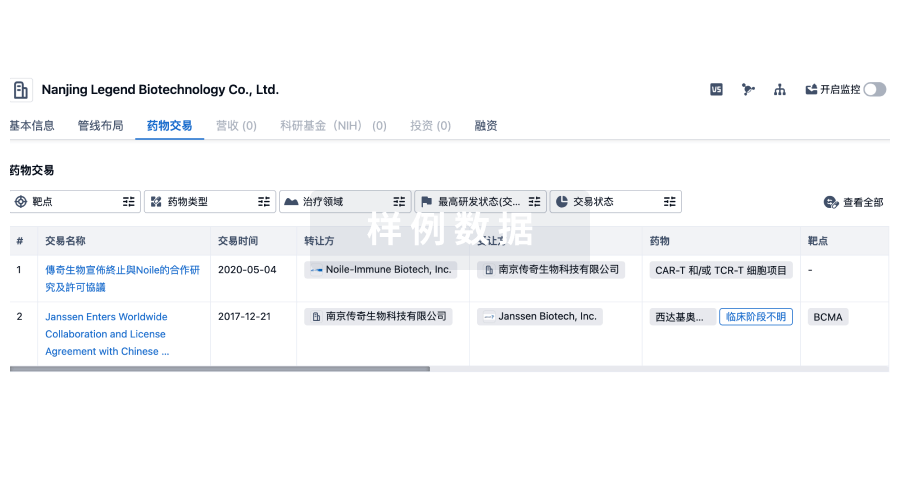
转化医学
使用我们的转化医学数据加速您的研究。
登录
或
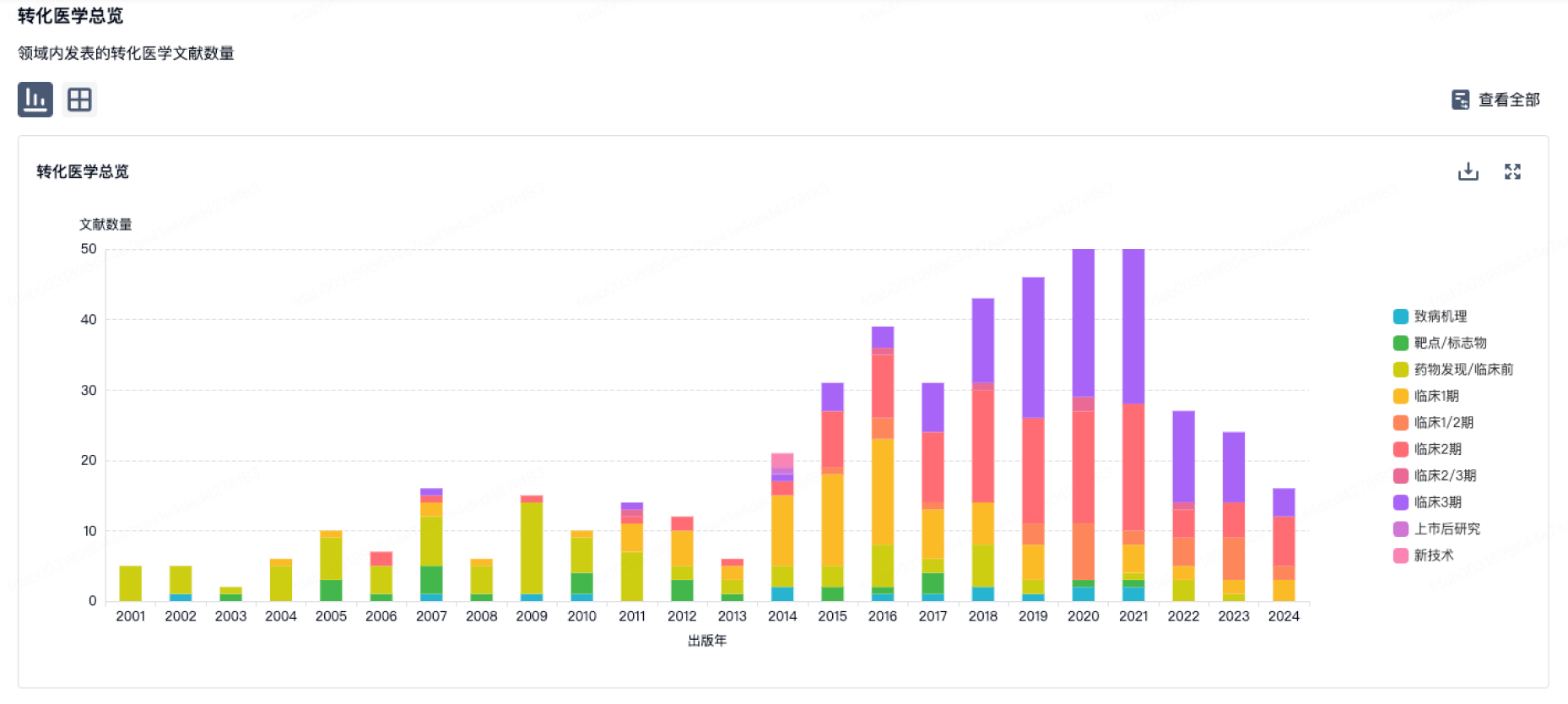
营收
使用 Synapse 探索超过 36 万个组织的财务状况。
登录
或
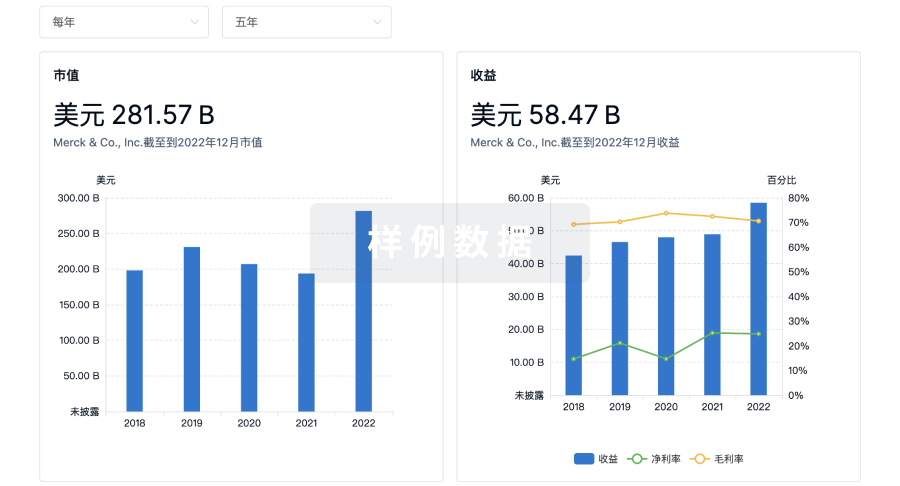
科研基金(NIH)
访问超过 200 万项资助和基金信息,以提升您的研究之旅。
登录
或
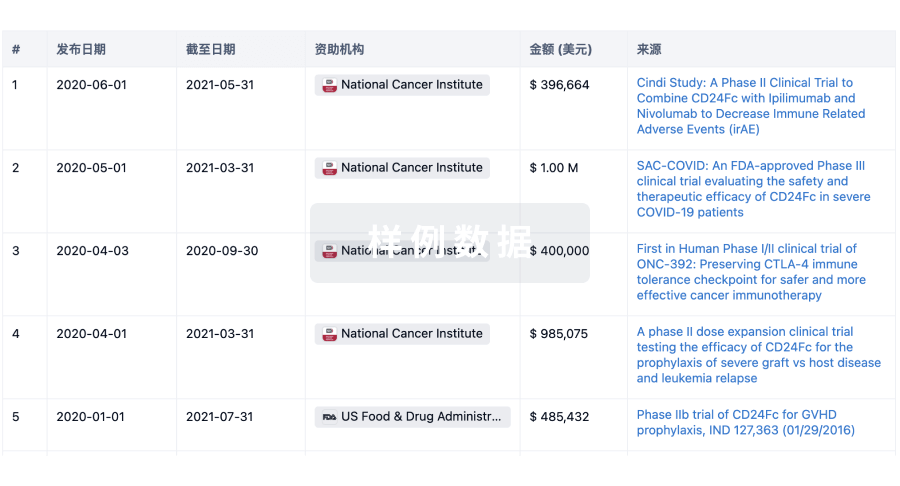
投资
深入了解从初创企业到成熟企业的最新公司投资动态。
登录
或
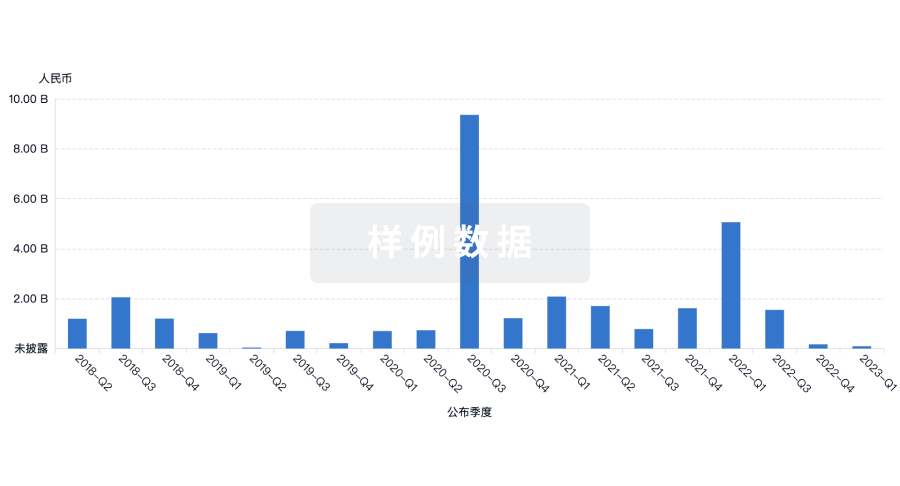
融资
发掘融资趋势以验证和推进您的投资机会。
登录
或
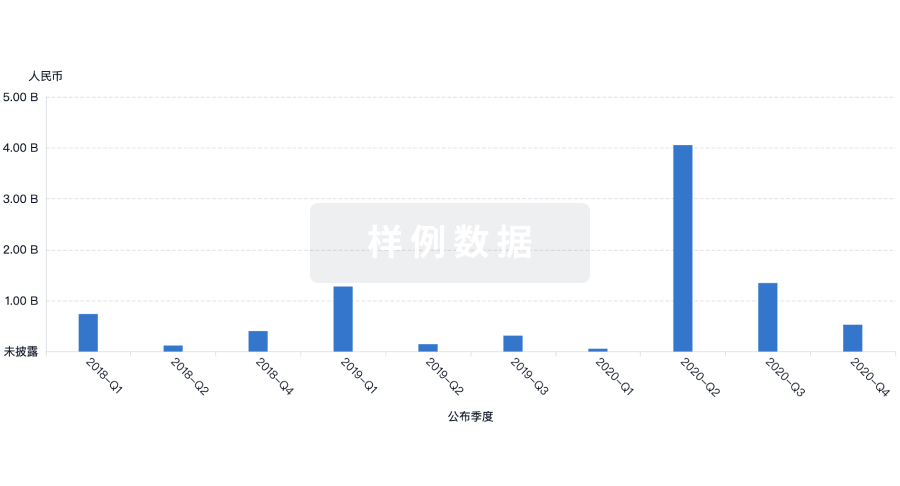
生物医药百科问答
全新生物医药AI Agent 覆盖科研全链路,让突破性发现快人一步
立即开始免费试用!
智慧芽新药情报库是智慧芽专为生命科学人士构建的基于AI的创新药情报平台,助您全方位提升您的研发与决策效率。
立即开始数据试用!
智慧芽新药库数据也通过智慧芽数据服务平台,以API或者数据包形式对外开放,助您更加充分利用智慧芽新药情报信息。
生物序列数据库
生物药研发创新
免费使用
化学结构数据库
小分子化药研发创新
免费使用
